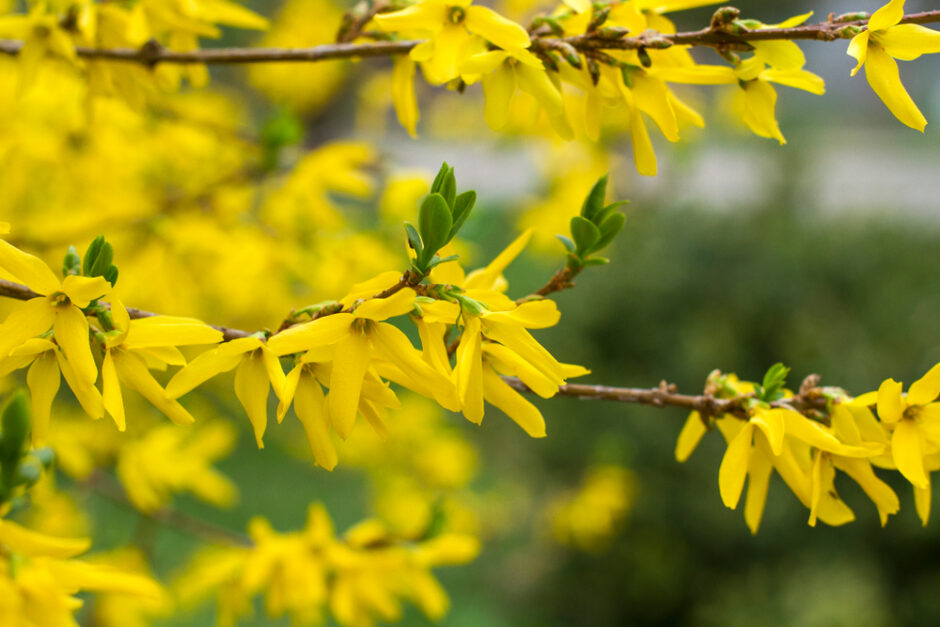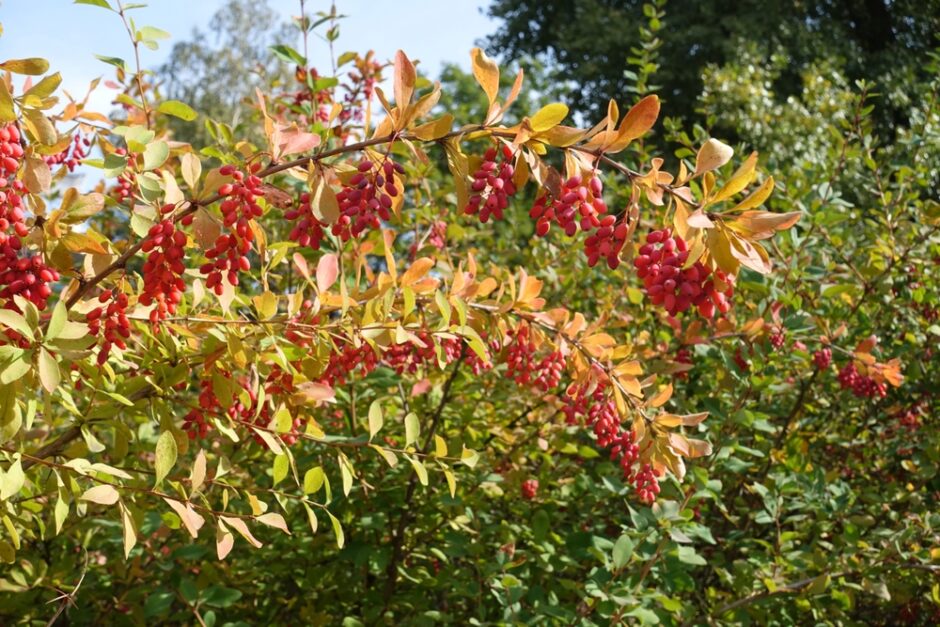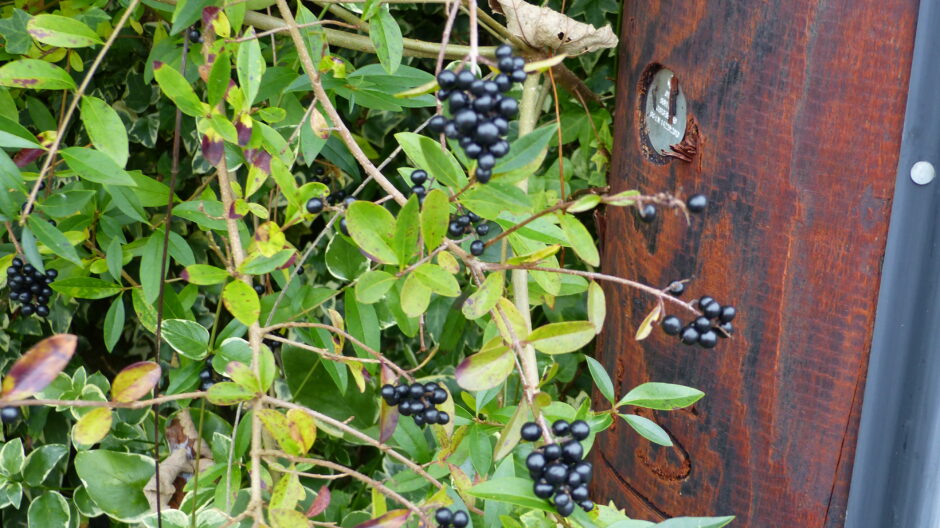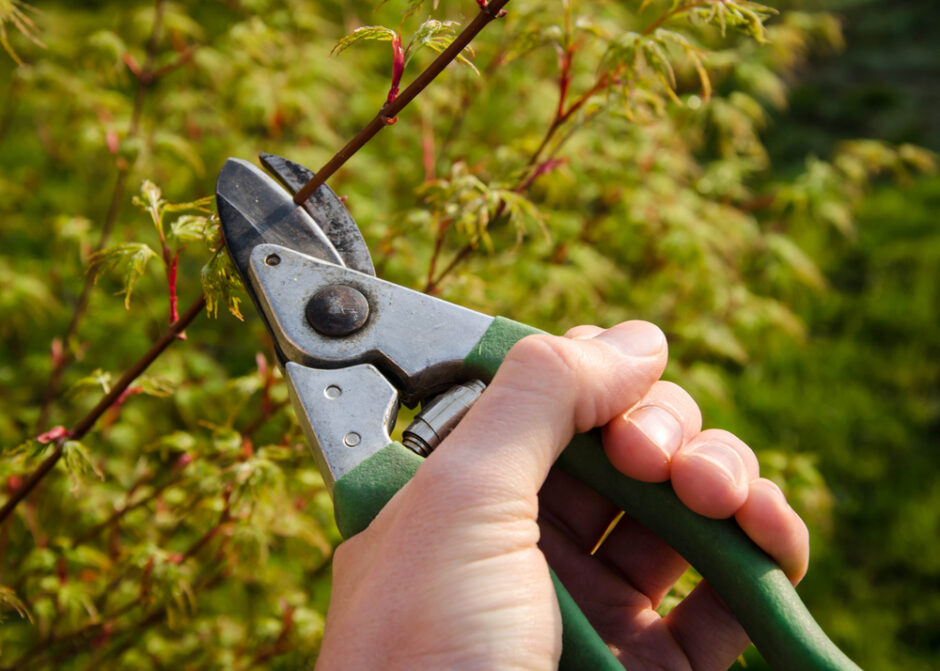Modern Day Pruning .. What I Hate About It…
Take a walk around the grounds of your local Supermarket, and in some of them you will see that they are inhabited by nothing else but hedges.
If you look closely at these hedges, you’ll find that they are made up of many different plant types which have been allowed/encouraged/forced to grow together for the ease and therefore cheapness of their maintenance.
By maintenance I mean pruning or cutting back, for plants in their unenviable situation are hardly ever afforded any other type of care.

Natural Forsythia

Natural Berberis
Take these two shrubs, the Forsythia and Berberis. If they are allowed to grow naturally they will produce flowers on branches that are free to roam. Cut as a hedge, we probably wouldn’t get to see the abundance of berries that the Berberis will produce – they will almost certainly be cut off before they get a chance to fully form.
However, they are commonly used as hedging, and it’s cheaper to quickly ‘run’ over them with a hedge cutter.
I know of one supermarket which has over 60 different types of shrubs within its grounds, but to the untrained eye they all look the same. These plants have different needs, and one of those needs is to be pruned at a particular time of year. As flowering buds develop at different times of the year, depending upon their flowering period, doing it at the wrong time of year can result in it not flowering at all.
Plants which flower in the Winter and early Spring months will be doing so from buds which formed in the previous growing season. Plants which flower in the Summer and Autumn months do so from buds which have grown during the current seasons growth.
Take Privet, which is a very common hedge. On a well tended and often clipped Privet hedge you don’t see flowers growing in the same way as you would see them on an early Spring flowering shrub like Forsythia.
This is not because Privet does not produce flowers, because it does. Quite spectacularly if you let it, followed in late summer by bunches of small black berries for the birds to eat. The reason you don’t get flowers on a well tended hedge is because the buds are formed on current seasons new growth, and those buds are repeatedly cut off during routine trimming. So, regular pruning of Privet equals ‘No Flowers’ and therefore then ‘No Berries either’.
Roll this flower denuding technique out across the Country, and the loss to pollinating insects is mind-blowingly enormous.

Privet Berries
This is what happens at the Supermarket I mentioned. All those plants with all that potential to produce beauty, nectar and berries – wasted because neither the managers of the store nor the staff that maintain the grounds have the foggiest idea of how to maintain their magnificent asset.
Given that this is going to be the standard way in which they intend to manage the shrubs around their grounds, then they may just as well have reduced their initial planting costs and just used 2 or 3 regular cheaper hedging plant species and saved on planting costs in the first place.
This technique for managing estates has also given rise to a modern day labour force that have not had the benefit of proper training when it comes to knowing how to prune most of the popular garden variety shrubs. They have only ever used a hedge cutter. This leads to there being a high level of dead wood within the shrubs, which can also lead to disease and die-back problems. It has however given birth to an interesting new horticultural term – ‘Hedgecuttering’ !!!
I also worry that, as a result of this ‘one method fits all’ pruning technique for managing pruning, many so called professional landscapers have a very poor basic knowledge of even the most common native and garden variety trees and shrubs simply because they no longer need to know .
Oh well …. That’s progress !!!

“Hedgecuttering”
With Education, Knowledge and Experience, the correct selection of species to fulfill any particular situation should not be beyond the wit of Landscape Architects, Landscapers and Grounds Maintenance Contractors.
If the shrub you are about to suggest or plant does not fulfill the need, then don’t plant it !
However, as this picture clearly shows, the fresh young red coloured leaves of this shrub – a shrub which has been bred particularly because it has that attractive characteristic – is about to be ruined by an uneducated operator.

